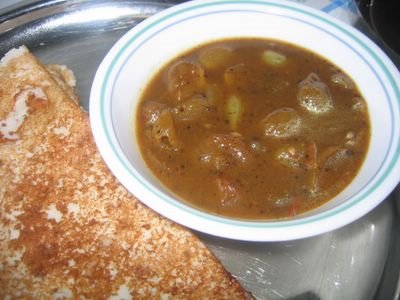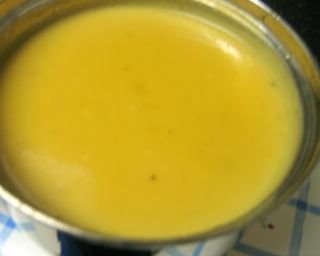
I am on the lookout for recipes that would be a healthy snack to eat for my toddler and even for us. I came across this recipe in the April issue of Cooking Light. I made a whole lot of changes but the result was very delicious and satisfactory. I have to let you know that this is a soft, cakey cookie. I find a lot of people's taste are for the other kind. But if you have a toddler, you won't go wrong with this soft cookie.
Banana-coconut cookies- 24 cookies
2/3 cup packed dark brown sugar
(the cookie is on the sweet side. The sugar can be reduced by 2T)
1/2 cup ripe mashed banana (I used 1 normal sized banana)
1/2 cup applesauce
1 T mayonnaise
1 tsp vanilla
1/4 cup whole wheat flour
1/2 cup AP flour
1 cup quick cooking oats
1/2 c sweetened coconut flakes
1/2 cup raisins
1/2 cup finely chopped walnuts
1 tsp baking powder
3/4 tsp ground cinnamon (can use a mix of other spices too)
1. Beat sugar, mashed banana, applesauce, vanilla and mayo in a large bowl and beat until blended.
2. Combine all the rest of the ingredients in another bowl. Stir flour mixture into banana mixture until well-combined.
3. Use 2 T dough for each cookie. Drop dough into parchment lined baking sheet and bake at 350 F for 20 min or until golden brown. Cool on a wire rack. This has to be eaten within a couple of days since they soften too much after that.
I made so many changes to this recipe (I never modify recipes that are to be baked). I really thought I would screw-up. But they turned out very well.
Here are the changes I made:
1. I added 1/4 cup whole wheat flour while it was all refined flour in original recipe.
2. The original used 1/2 cup mayo and no applesauce.
3. The original was baked until very lightly colored but then they have the texture and color of muffins. I did not find that too appealing in a cookie.
For a not so healthy version, you can try this way too. If you find that they come out crisp, please let me know. There will definitely be repeat acts of this cookie.







